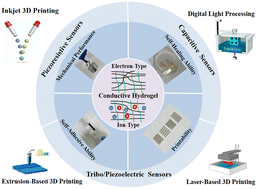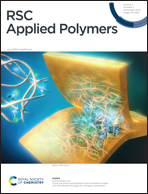Recent progress in the development of conductive hydrogels and the application in 3D printed wearable sensors
Abstract
Compared with traditional device-type sensors, flexible wearable sensors have attracted fast-growing attention owing to the excellent stretchability and strain sensitivity. Conductive hydrogels, a kind of hydrophilic polymer material with a three-dimensional (3D) network structure, are excellent candidate materials for wearable sensors because of their conductivity, sensitivity, stretchability, biocompatibility, and high adjustability. The structural modifiability also endows conductive hydrogels with more functionality such as self-healing and adhesiveness. In the process of preparing wearable sensors, the traditional templating-based methods are not suitable for customer-tailored applications. And more importantly, dimensional accuracy cannot be guaranteed for the traditional methods, which limits the applications. A 3D printing technique, which constructs 3D structures by discrete-cumulative methods, can control the shape and accuracy based on a computer model. Compared with templating-based methods, 3D printing technology has more advantages in constructing wearable sensors. In recent years, there have been increasing research efforts being paid to integrating 3D printing technology with conductive hydrogels, while there is less effort spent on summarizing the current research advances. In this paper, we reviewed the research progress of 3D printing in wearable sensors based on conductive hydrogels, with an emphasis on the classification of conductive hydrogels, the mechanisms of wearable sensors and applications of 3D printing methods. Finally, the remaining problems and opportunities were discussed.

- This article is part of the themed collections: Sustainable Development Goal 3: Good Health and Well-Being, Editor’s Choice – Rachel Auzély-Velty and Recent Review Articles

 Please wait while we load your content...
Please wait while we load your content...